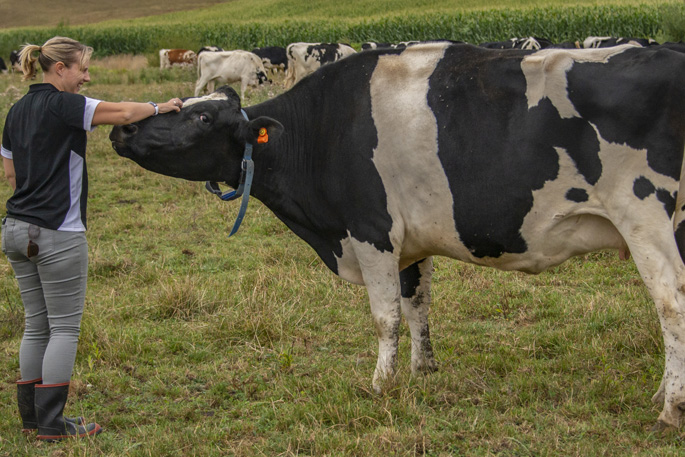Holstein Friesian NZ field officer Amelia Griffin, 27, spends two weeks out of three on the road touching base with farmers who breed or milk this historical breed of dairy cow.
Holstein Friesians were first brought to New Zealand in 1884. The breed is a blend of the German Holstein and the Dutch Friesian, and its ancestors have been around for 2000 years.
With its characteristic black and white markings, the breed is renowned for its high protein and above-average fat content milk, coupled with high production rates and high value calves. It is also bred for beef.
“Holstein Friesians are the most dominant breed in New Zealand with each cow producing on average more than 4000 litres of milk per year,” says Amelia.
The New Zealand Holstein Friesian Association was started in 1910, as a vehicle for registering pedigree animals and recording bloodline histories and now trades as Holstein Friesian NZ.
“We have more than 800 members made up of experienced farmers who have a deep passion for the breed and where we go with it.”
The country is split into eight wards, each with a director. The Hamilton base has five permanent staff. In the 2017-2018 season 34,456 pedigree cows were on the association’s register.
“Part of my job is to meet with farmers to support and discuss their breeding programmes,” says Amelia.
“I also run young breeder’s/youth events and camps to further knowledge of upcoming breeders.”
A substantial part of Amelia’s role is classification of “traits other than production” for the association’s pedigree system and sire-proving daughters for the industry.
Registered cows must display five white points – four white feet and a white switch of the tail – and be either black and white, or red and white. The black gene is dominant.
Desired traits also include good capacity – wide/deep chests – good udder traits and body traits, and a good temperament.
While NZ has its own Holstein Friesian genetics, breeders also import semen from the US, Canada and Europe to diversify and improve the gene pool.
Each year North Island and South Island championships are held at a local show in each island, however due to the Mycoplasma Bovis eradication programme currently underway these have not taken place in the 2018/2019 show season.
“We are still unsure of the effect M. Bovis has had on the breed,” says Amelia. “But if there were widespread losses, the effect would be devastating, destroying years of breeding history as well the financial impact of losing such highly valued cattle.”
More information on the Holstein Friesian breed can be found at: www.nzholstein.org.nz



0 Comments
Leave a Comment